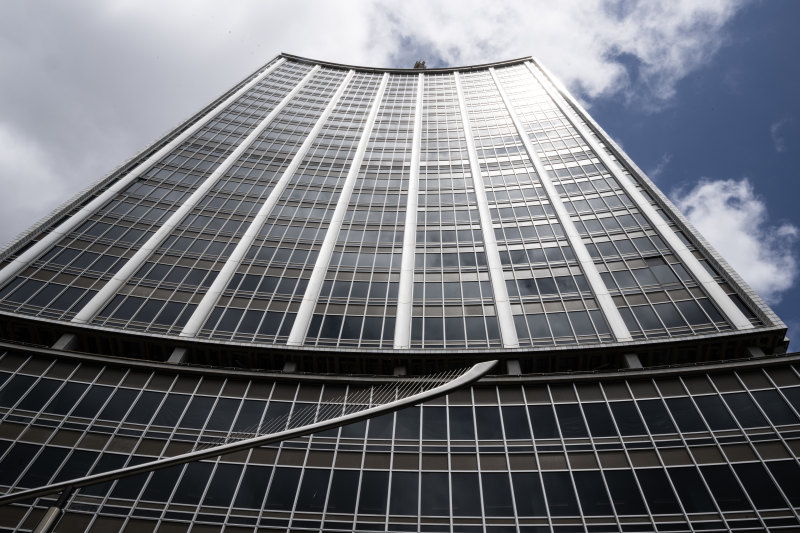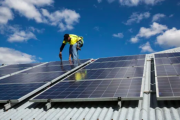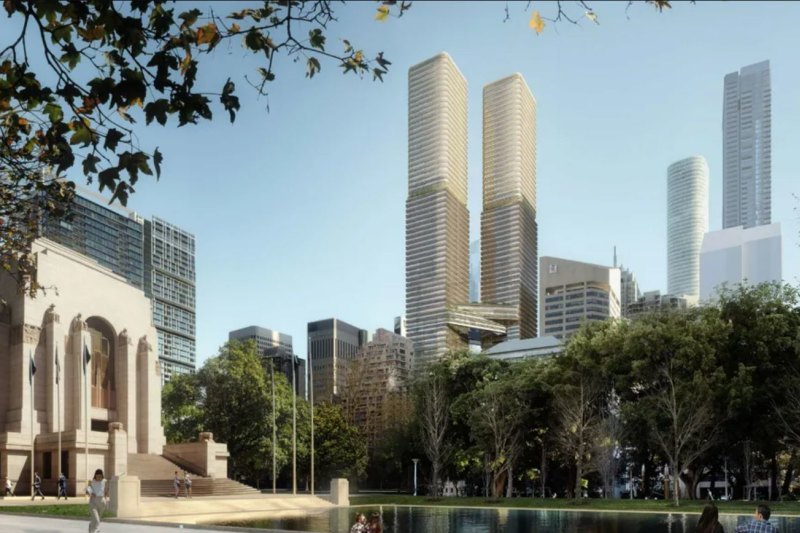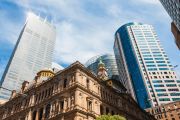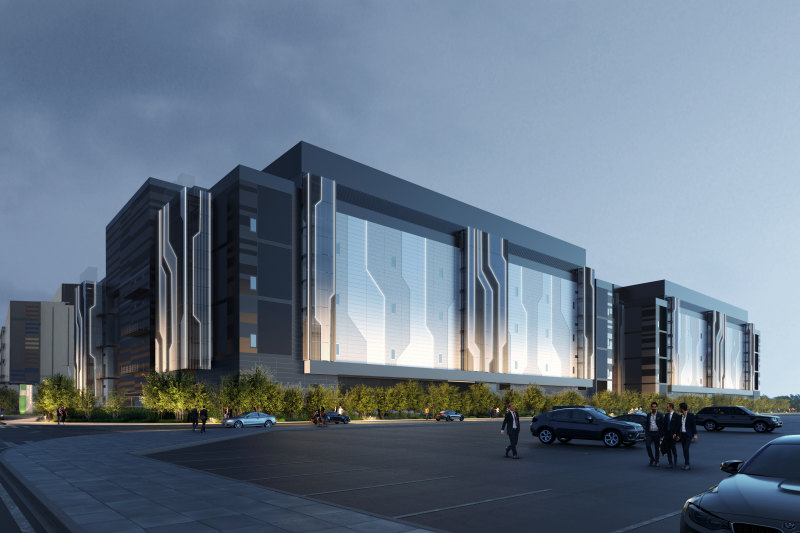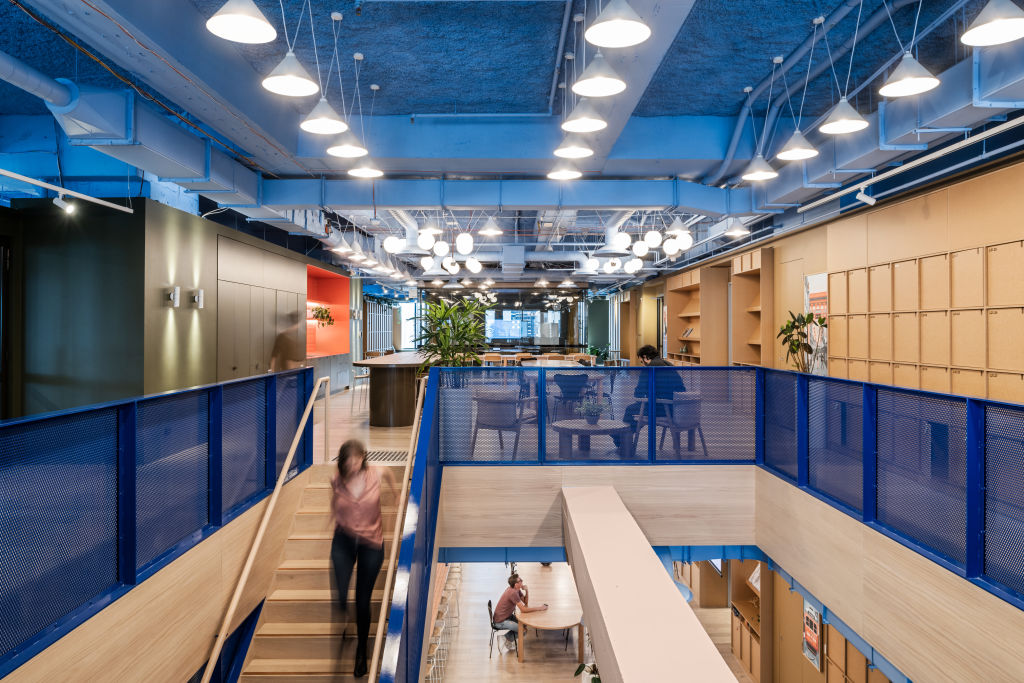
The three office leasing trends every capital city is seeing
The honeymoon after a federal election often brings sighs of relief to Australia’s business community. Election over, let’s get back to it.
This year, however, COVID, climate change and, in Perth, commuter patterns and the resources market – rather than the recent change of government – are creating wariness in Australia’s office leasing market, according to experts.
Though the business outlook is buoyant, the talking point is staff numbers and how many will choose to work from home and when.
Research by JLL recorded net absorption of 14,200 square metres across all CBD office markets in Australia in the first quarter.
In every capital city, three trends are apparent: CBD tenants want to upgrade to better, greener buildings as the 2030 carbon-neutral target approaches; they want the same space or the option of flexible space; and they want touchless amenities to support enhanced hygiene.
In Brisbane, hard hit by floods, tenants are choosing the practical route of upgrading to higher land amid a wealth of CBD-fringe options.
The Sydney and Melbourne markets show a move from A-grade to prime buildings as well as vigorous activity in the 500 to 1000-square-metre market as tenants make the most of incentives. Large tenants – especially internationals – remain cautious as the pandemic plays out.
Perth, the sweetheart of mineral resources rather than anything happening out east, faces high but improving vacancy rates as mining and IT tenants expand.
This is against a background of record foreign investment in Australian commercial property last year with more than $16.6 billion piling in, of which office stock accounted for 43 per cent.
CBRE data shows North American investors supplying 39 per cent of the total. About 66 per cent of the capital deployed was in partnership with a local fund manager.
Melbourne rejoiced when Amazon was named the anchor tenant in a new $1.5 billion, six-star office precinct at 555 Collins Street.
The stage one tower, due in 2023, will have 48,000 square metres of office space with smart technology that monitors air quality and offers touchless amenities to support enhanced hygiene for 7500 workers. This will be followed by tower two, with 32,000 square metres.
Property manager Charter Hall says the premises will host Amazon Web Services and amazon.com.au in a future-proofed workplace designed by Gensler and COX Architecture.
An incoming norm might be glamorous buildings with event rooms to rent as needed. In Melbourne, GPT’s new 34-storey Queen & Collins has communal spaces to be hired by tenants rather than leased as full-time spaces.
“It has been a great test case for us in understanding what the occupier of the future wants out of their space,” says Stephen Nicol, GPT’s head of office leasing.
“The flight to quality is certainly what we’re observing, and GPT’s prime-grade portfolio is well-positioned to benefit. Customers want more out of their office than ever before.
“From a tech perspective, everything promotes work-anywhere behaviour, including seamless tech connectivity allowing employees and guests to focus on what matters most.”
Noteworthy, too, is the leasing in June by flexible workspace provider The Executive Centre of two AMP Capital-owned spaces, Collins Place in Melbourne (1682 square metres) and Sydney’s Angel Place (1665 square metres), to allow nearby businesses to spill over.
Both locations will be renovated for flexible working, private suites and cafes.
Sydney’s CBD added 33,555 square metres of supply – mainly refurbishments – in this year’s first quarter, Colliers says. Demand from the technology sector, private equity, healthcare, finance and insurance are rising and the prime vacancy rate has decreased to 8.4 per cent.
Interest is strong in Pitt Street, set for a new rail station with offices above – including the new Macquarie Bank headquarters – and in the CBD’s north, such as AMP’s Quay Quarter Tower (50 Bridge Street), which was 97 per cent committed on its recent completion.
Lendlease’s new tower at 180 George Street is fully leased on all but its lower levels, says Cameron Williams, Colliers’ Sydney head of office leasing.
“We are doing larger volumes compared with what we were doing pre-pandemic in 2019, so this suggests people are feeling comfortable about long-term leases,” Williams says.
“We’re doing a lot at the smaller end [500 to 1000 square metres] as tenants move to better buildings, and this part of the market is tightly held. What we have seen is really good interest as tenants take advantage to trade up.
“But it gets pretty thin at the top end. That suggests to me that decisions are not being made locally but offshore.
“Local tenants are confident about their future and are willing to make commitments right now. But the offshore managers are not as active and seem to be influenced more by what is going on in Europe or the United States.
“The war in Ukraine has had a flow-on effect in the economy.”
In this cautious environment, building on spec is not an option.
“You are looking at a minimum 30 to 40 per cent of that product – maybe 15,000 square metres – being committed before you start construction,” Williams says.
Melbourne CBD, at a 30-year vacancy low in 2019, shows a grudging 48 per cent occupancy rate, according to the Australian Property Council. But this gives tenants a breather in which to seek better digs, says JLL’s Victoria joint head of office leasing, Nick Drake.
“People have come into this with a lot of positivity, and we’re seeing smaller tenants move from lower-grade assets to A-grade or prime buildings,” he says.
“Collins and Bourke streets as Melbourne’s main corridors are doing well, but there’s not a lot of activity in Docklands.”
In Brisbane, one of the biggest new tenancies is that of super fund Australian Retirement Trust, which will move into the upper floors of Charter Hall’s Brisbane Square, 266 George Street, on an eight-year lease after upgrading the premises for sustainability.
The CBD and fringe postcodes such as Spring Hill are likely to benefit from tenants relocating from riverside areas, with flooding now a perennial fear, says Mitch Connell, director of Aegis Property Group.
“Unfortunately we’ve had a few issues impact our market – floods and COVID. In Brisbane right now, with the flu season as well as COVID, I’d say one in every two or three people is away sick from work,” Connell says.
“It is too early to say what effect the federal election has had on our market. But in the early part of 2022 we had really good confidence going into the new year.
“However, this is very much a tenant-oriented market. A number of new projects coming on line show a tidal wave of supply.
“We have something like 90,000 square metres of uncommitted office space just in the fringe market in the last 12 months.”
Existing tenants are using blend-and-extend relief options on their leases, he says.
“The benefits to landlords is that they can help larger tenants to secure extra tenure during this pandemic. It’s a win-win for everyone.”
In Perth, COVID and remote work has noticeably changed how and when workers commute, the PAR Group reports.
Researchers Damian Stone and Rob Ellis tracked a steep decline in public transport use, with passengers down 35.6 per cent and car use up 1.1 per cent.
While the Perth CBD office vacancy rate has declined from pre-COVID levels thanks to incentives and stock withdrawals, Stone estimates only 50 per cent of the daily office workforce has physically returned.
“The way people live, work and shop has changed and it is unlikely the end game has even been reached,” he says.
The mining sector’s share of Western Australia’s economic output grew from 35 per cent in 2015 to 42 per cent in 2021, and the sector is also the largest occupier of Perth CBD office space, ahead of IT and professional services.
Perth CBD accounted for 14 per cent of national leasing activity in the first quarter, JLL reported.
The commuter lull has allowed tenants in East Perth and West Perth to consider a move to the CBD, says Colliers’ Perth-based national head of office leasing, Jemma Hutchinson.
“Mining resources have always been identified with Perth, but now we have mining tech with new businesses coming in to play,” she says.
“We are up on transactions from the 2010 mining boom peak and 65 per cent of tenants in Perth are expanding their space. We saw a move from East Perth to new space in West Perth in 2019, and now tenants want to expand into the CBD.
“What I predict is that we will reach $1700 per square metre, with prime rents stabilising next year. The new CBD transport precinct being developed now to 2027 will also be a drawcard.
“WA benefits from a strong relationship with China, which is a large export market for us, and we expect that to continue.”
